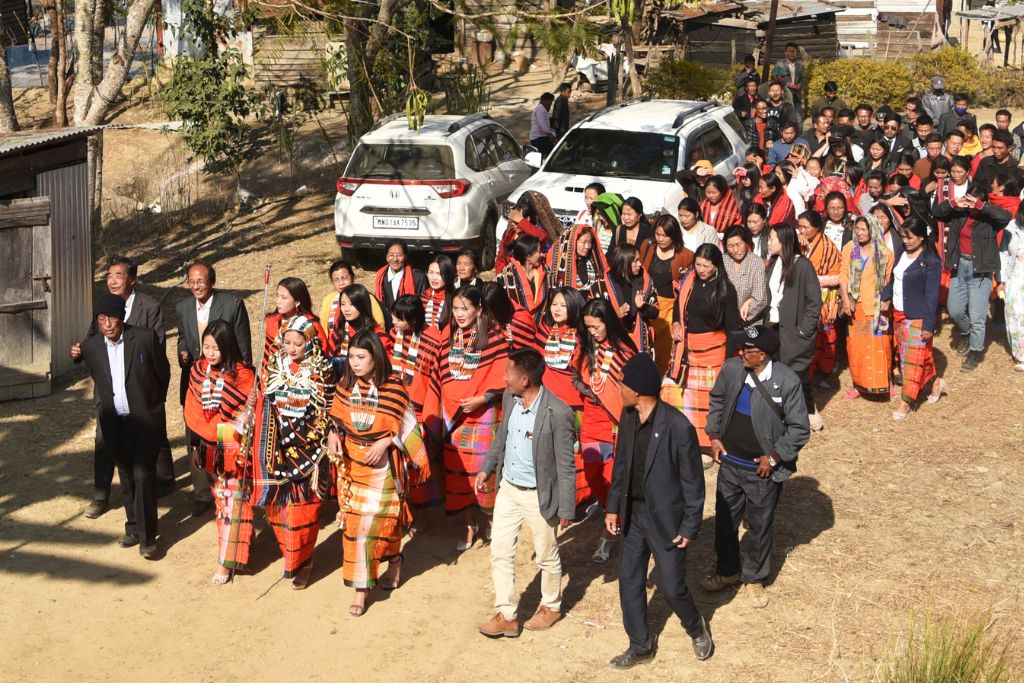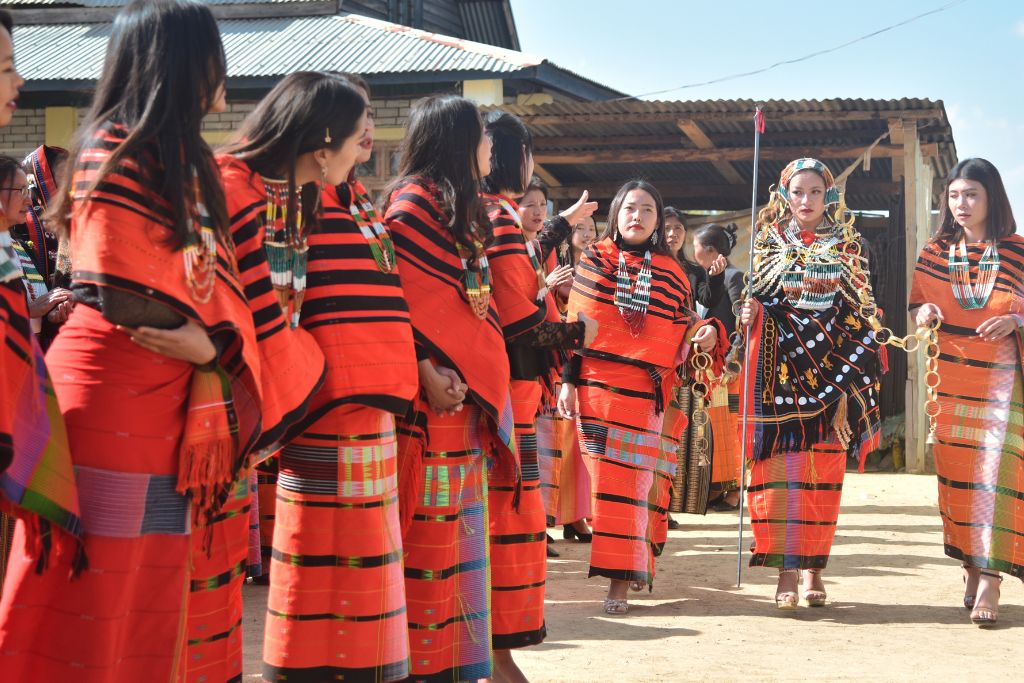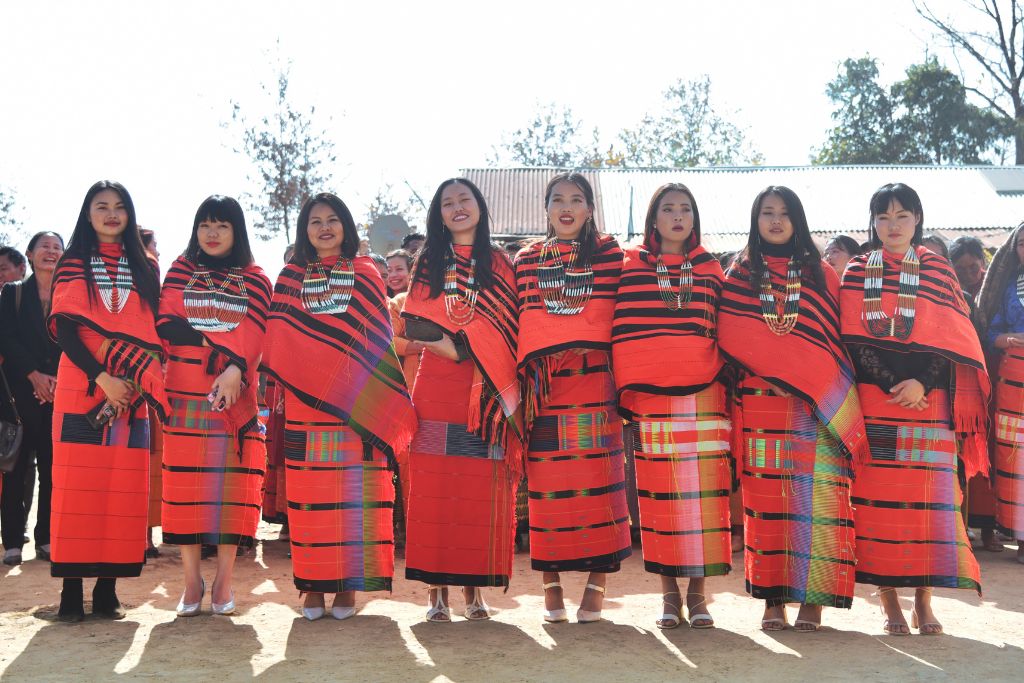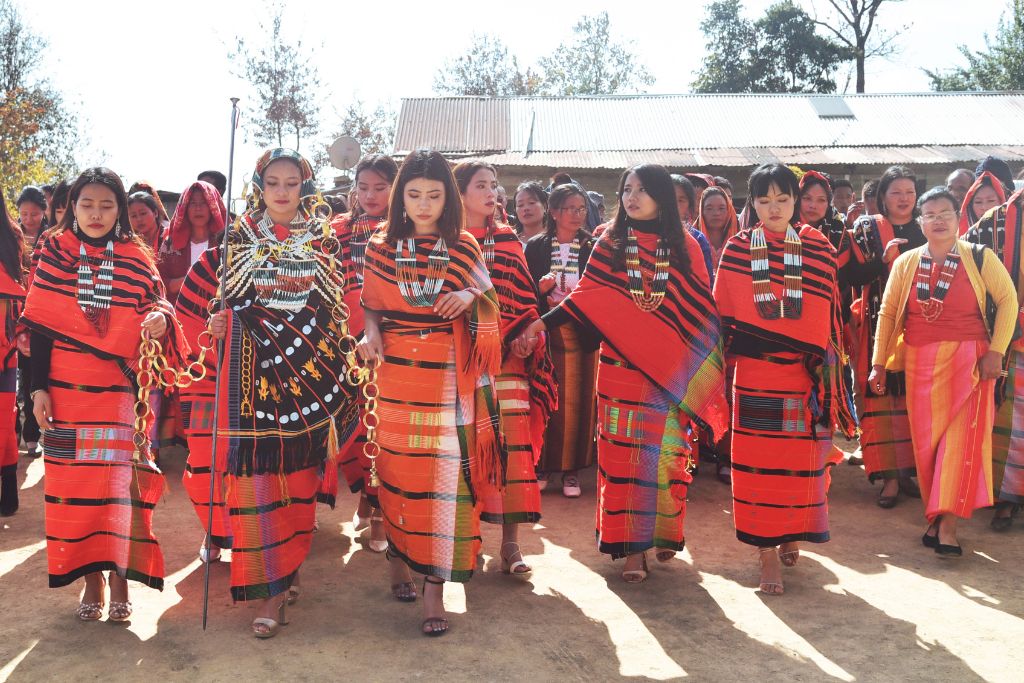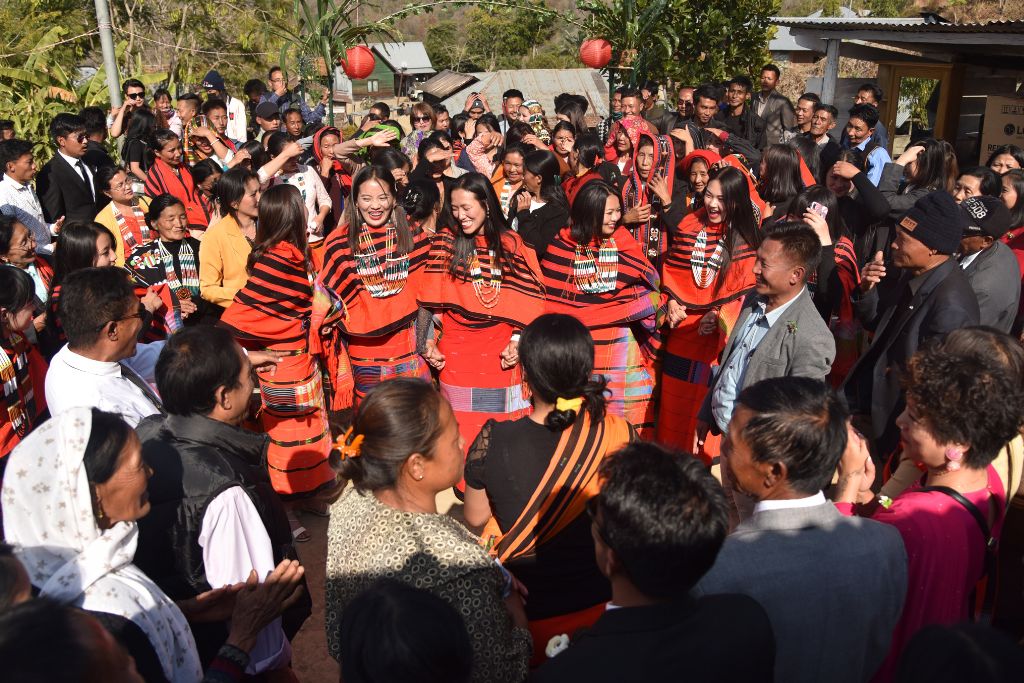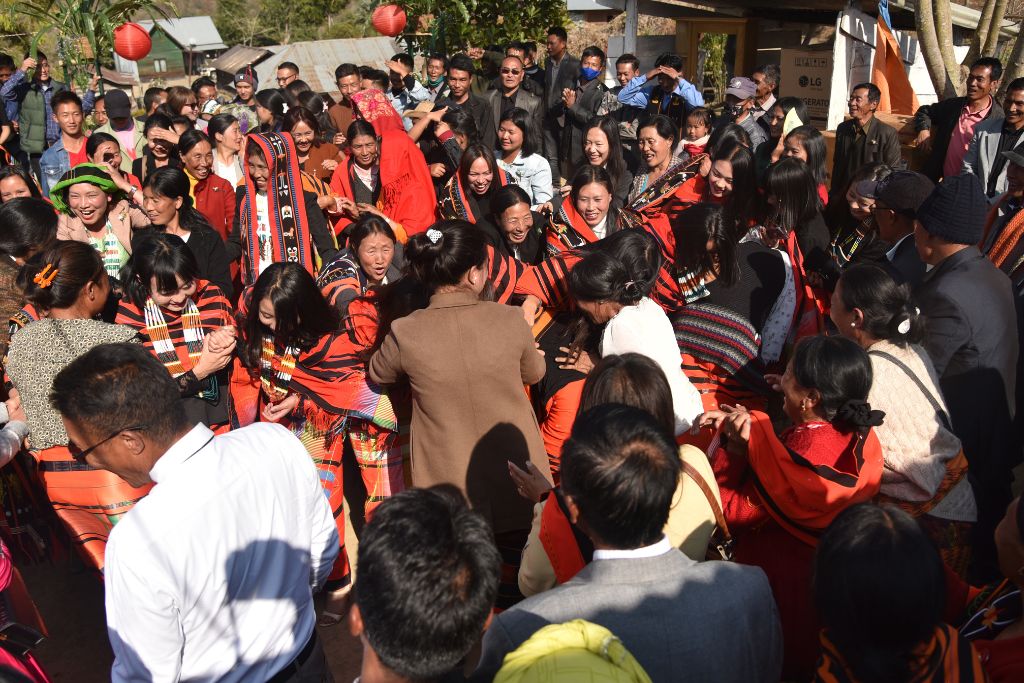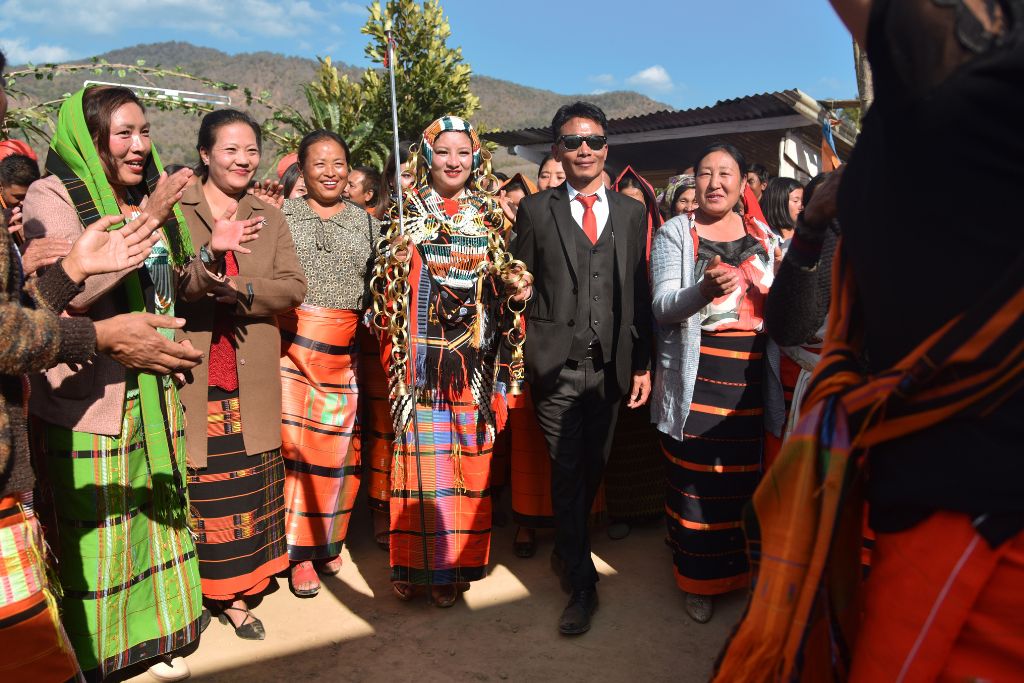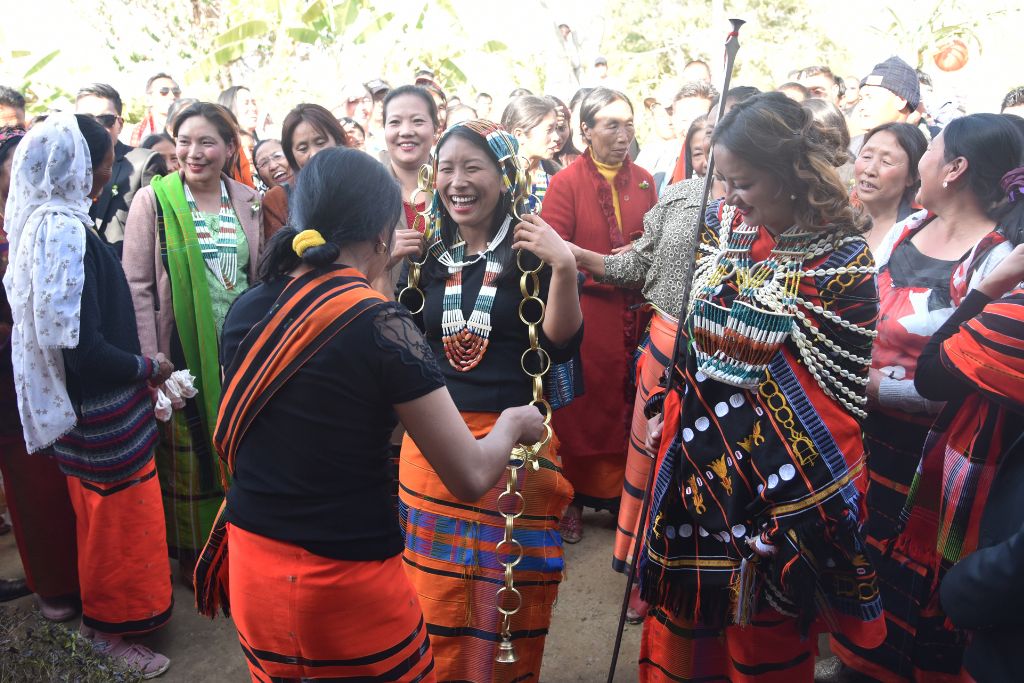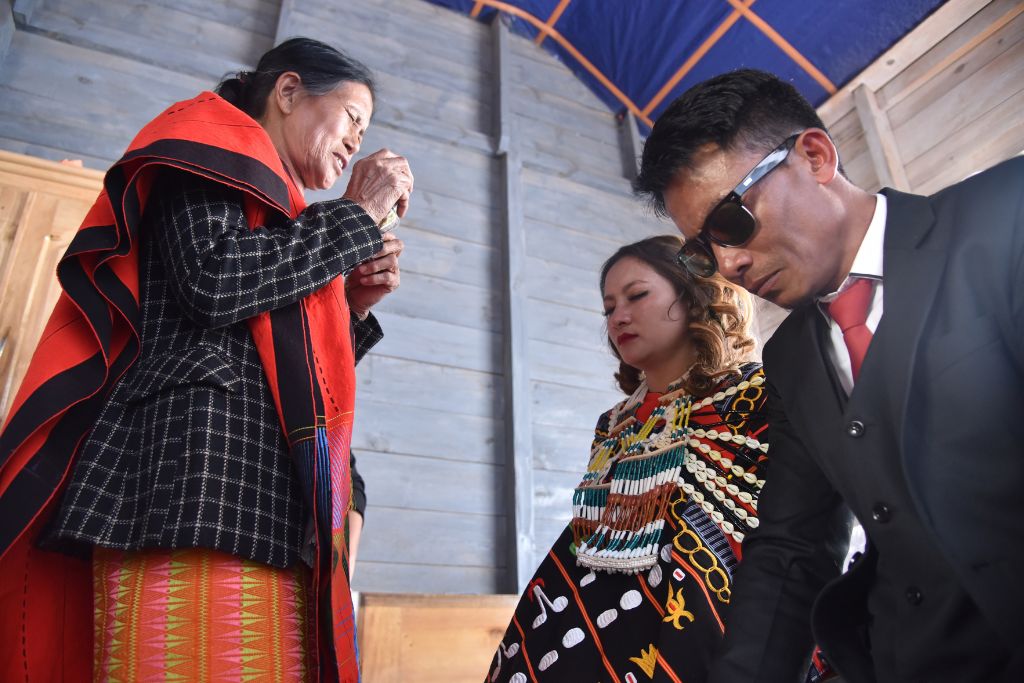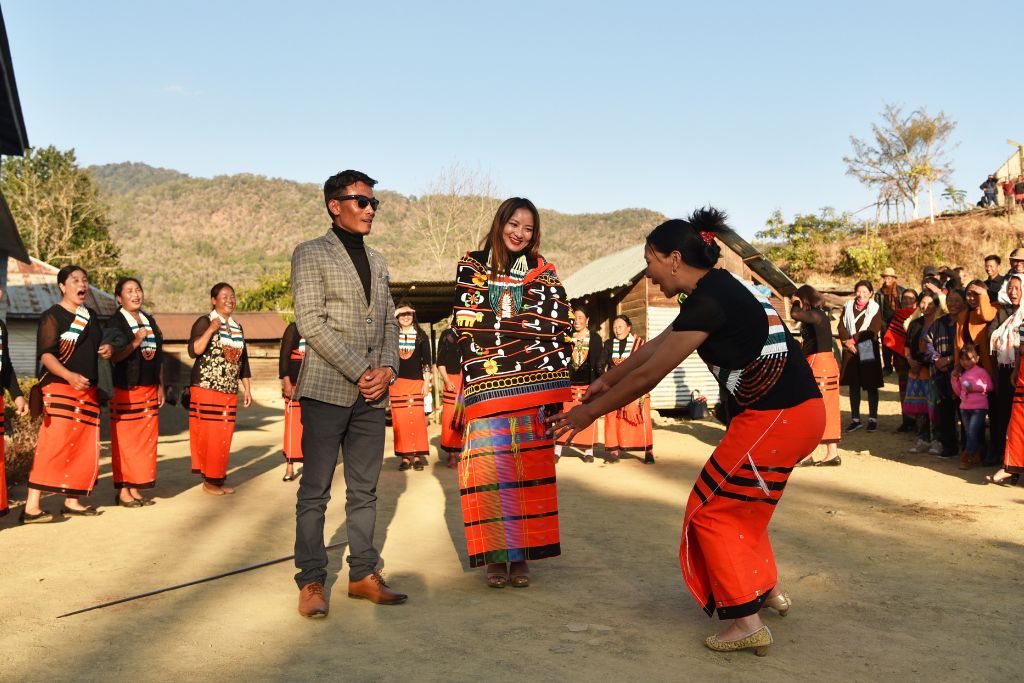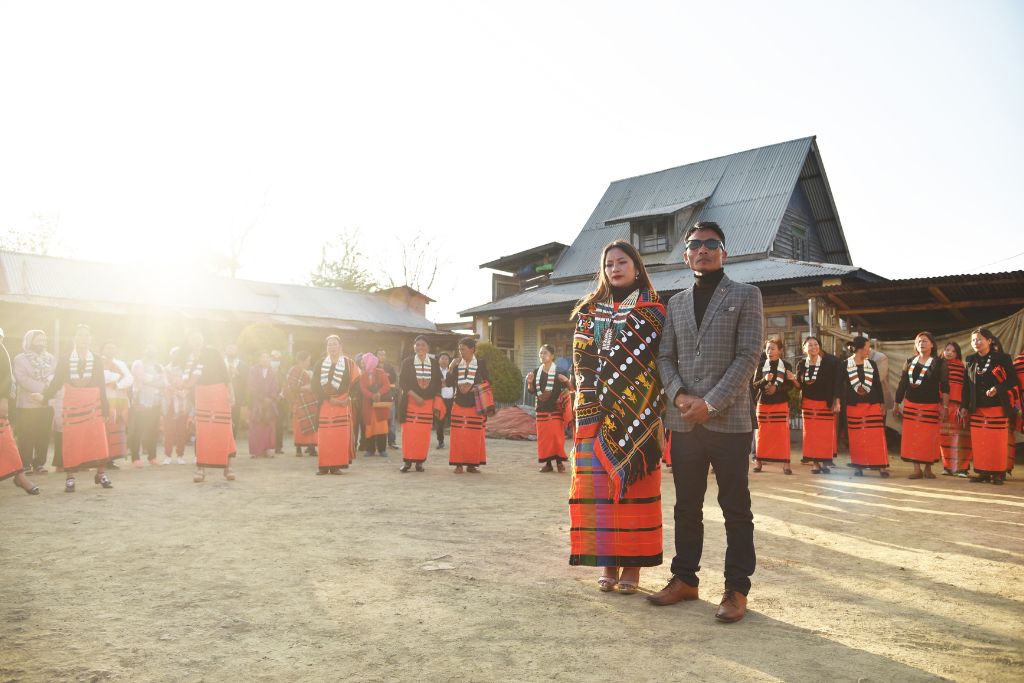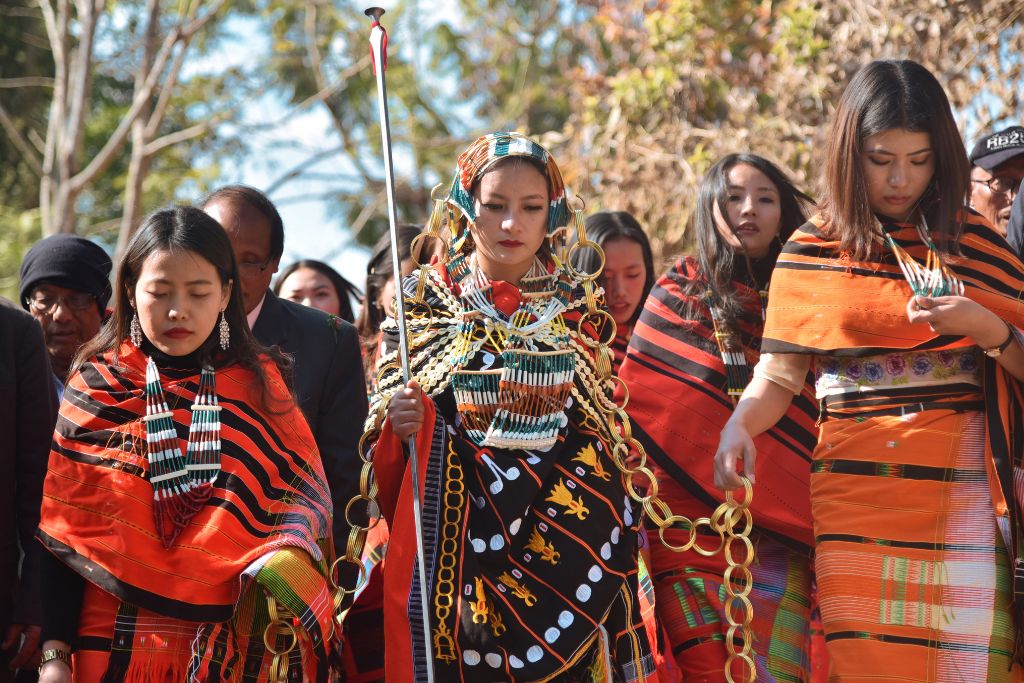
The exuberant post-wedding bridal march of Tangkhul Nagas
Ngala katha remains a prominent tradition in Tangkhul Naga weddings, enduring despite modernization. The vibrant post-wedding march from bride's to groom's house is cherished as its highlight.
Ngala katha is a traditional practice in Tangkhul Naga weddings where the family members and friends of the bride accompany her to her new marital home. The march takes place after the Christian wedding ceremony and is one of the few traditional elements that have survived the modernisation of the Tangkhul Naga weddings in Manipur.
The bride is adorned with traditional clothes and ornaments from head to toe. The most common ornaments worn by Tangkhul brides during the ngala katha are:
Kongsang – A necklace made of different colours of beads, conch shells, cowries, and other precious stones. One kongsang is worn around her neck and another on her head during the ngala katha.
Huishon – A bronze ornament of interlaced rings worn dangling from the head on both sides down to the knee. The interlaced rings make a tinkling sound when the bride walks. The huishon is considered an ornament of prestige.
Khom masim – An ornament made of shells and colourful beads the bride wears around the shoulder and waist, over her shawl and kashan (wraparound).
Also, the bride walks with a zeithing (iron spear) while carrying a tunsop (a bamboo basket) filled with cooked sweet sticky rice, covered with a folded shawl. The rice is meant to signify the hope that the new union between the bride and groom and the two families will be as sweet and bound together.
Siblings and relatives of the bride wait for the ngala katha to begin.
Also Read: Tangkhul Naga catering start-up transforms traditional feasts
The bride leads the first line of the ngala katha group. Her siblings and close relatives, who are also dressed in traditional attire, accompany her. Of late, close friends and bridesmaids also join the march to make up the numbers.
Also Read: This Manipur designer’s creations echo tribal roots
Outside the groom’s house, the women accompanying the bride form a human chain, hiding the bride, and teasing the groom to find her. The women also demand laphei, a courtesy monetary gift the groom gives as a show of gratitude for accompanying his bride to his home.
A friendly banter ensues between the two sides, where the women from the bride’s side demand a higher laphei, and the women from the groom’s side demand that the bride be handed over. This banter is carried out in the form of songs.
After the groom’s family shells out the laphei, the groom is allowed to come through the human chain and find his bride.
The bride’s traditional ornaments are handed over to one of the women in the groom’s family for safekeeping. In most cases, the bride hands over her ornaments to her mother-in-law. In this photo, the bride hands over her ornaments to her sister-in-law.
The mother-in-law then welcomes the bride into her new home and blesses the newlywed couple. This is largely a Christian tradition that has been incorporated into the traditional practice of the ngala katha.
Also Read: Cutting out prejudices, barbers shine at Bhind weddings
Finally, the newlyweds are often serenaded by the womenfolk from both sides. While the women from the groom’s side welcome the new bride, the women from the bride’s side bid their farewells to the bride through songs that reminiscence the good old days they spent together with the bride.
This singing is often the last act of the ngala katha before the bride says goodbye to her family members to start life in her new home.
Also Read: The notice that proves no one takes dowry in this village
Disclaimer: This photo essay aims to portray the ngala katha ceremony as it is practiced today and is by no means a comprehensive account of the minute details of the rites, rituals, and customs associated with ngala katha before the advent of Christianity in the region.
Photos and text by Worngachan A Shatsang a freelance journalist based in Ukhrul, Manipur, and a Rural Media Fellow 2022 at Youth Hub, Village Square. He writes about football, rural life, farming and environmental issues.
